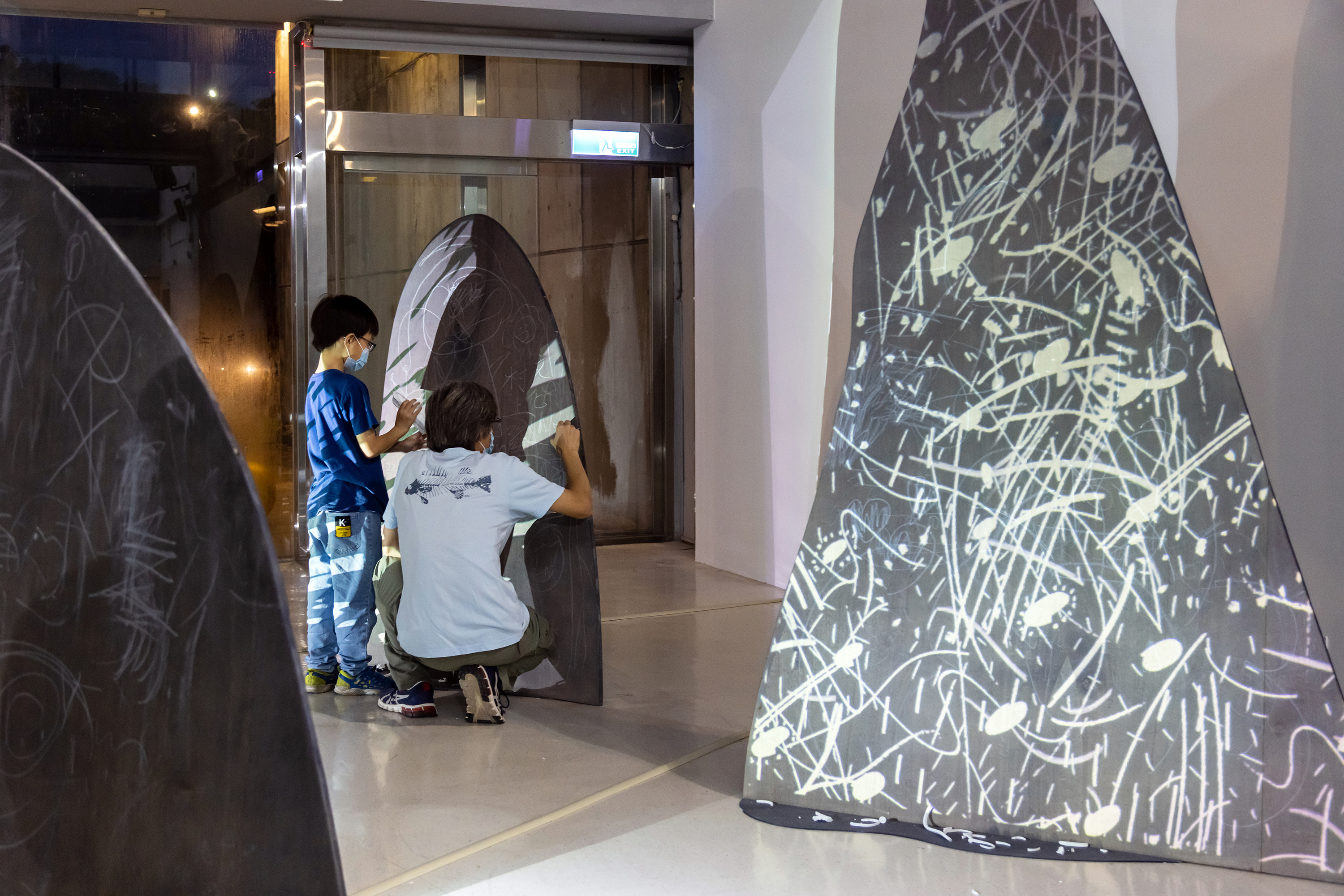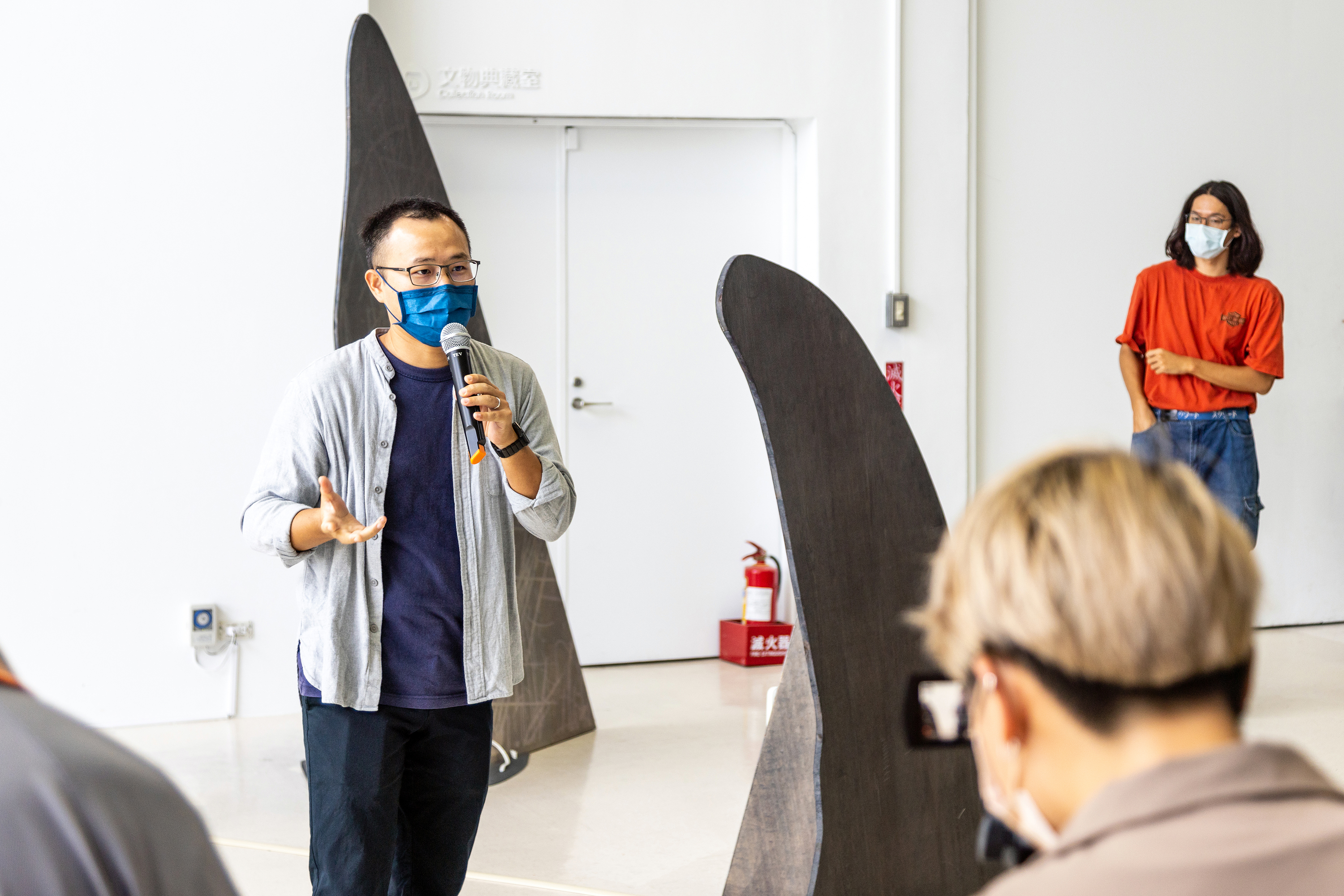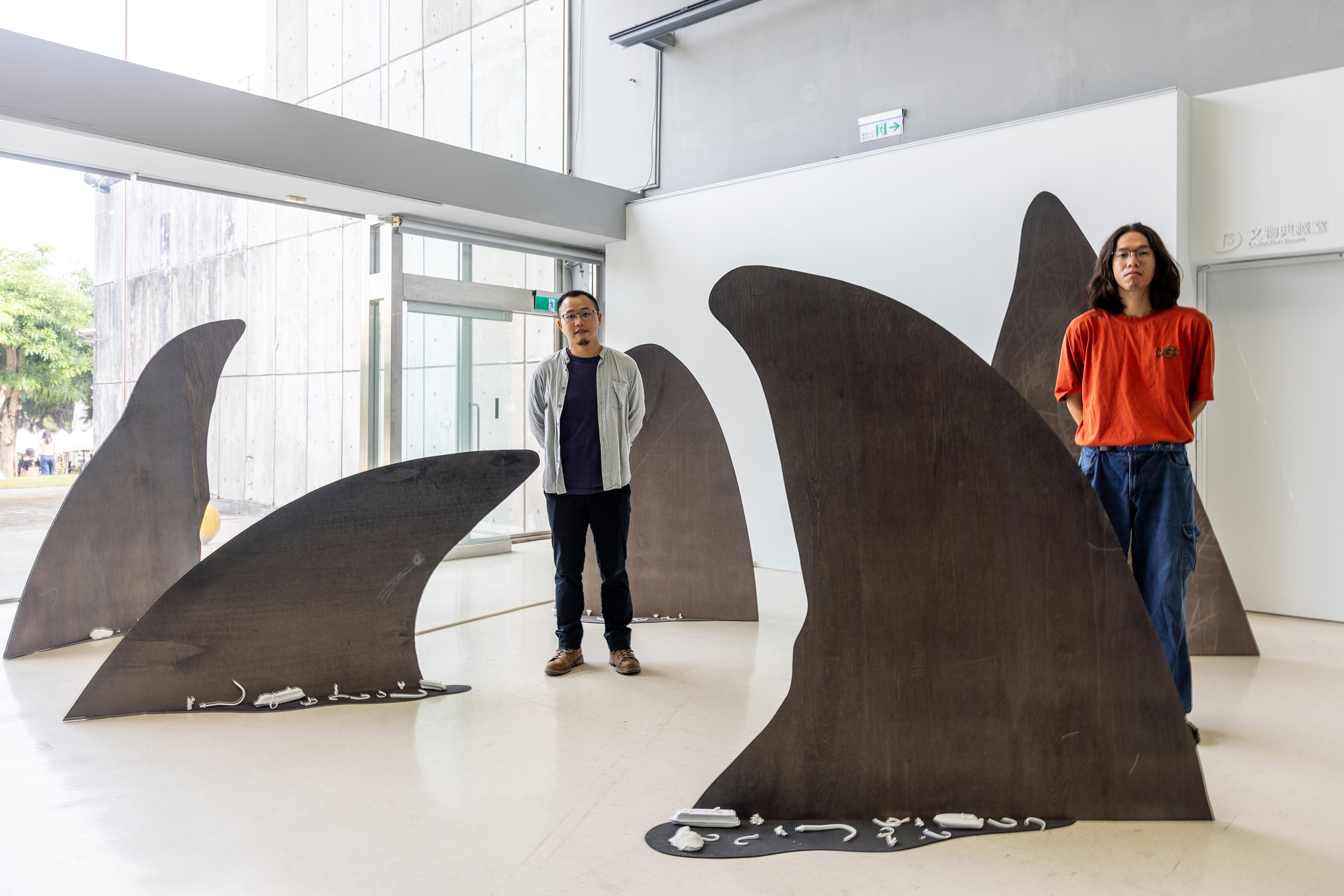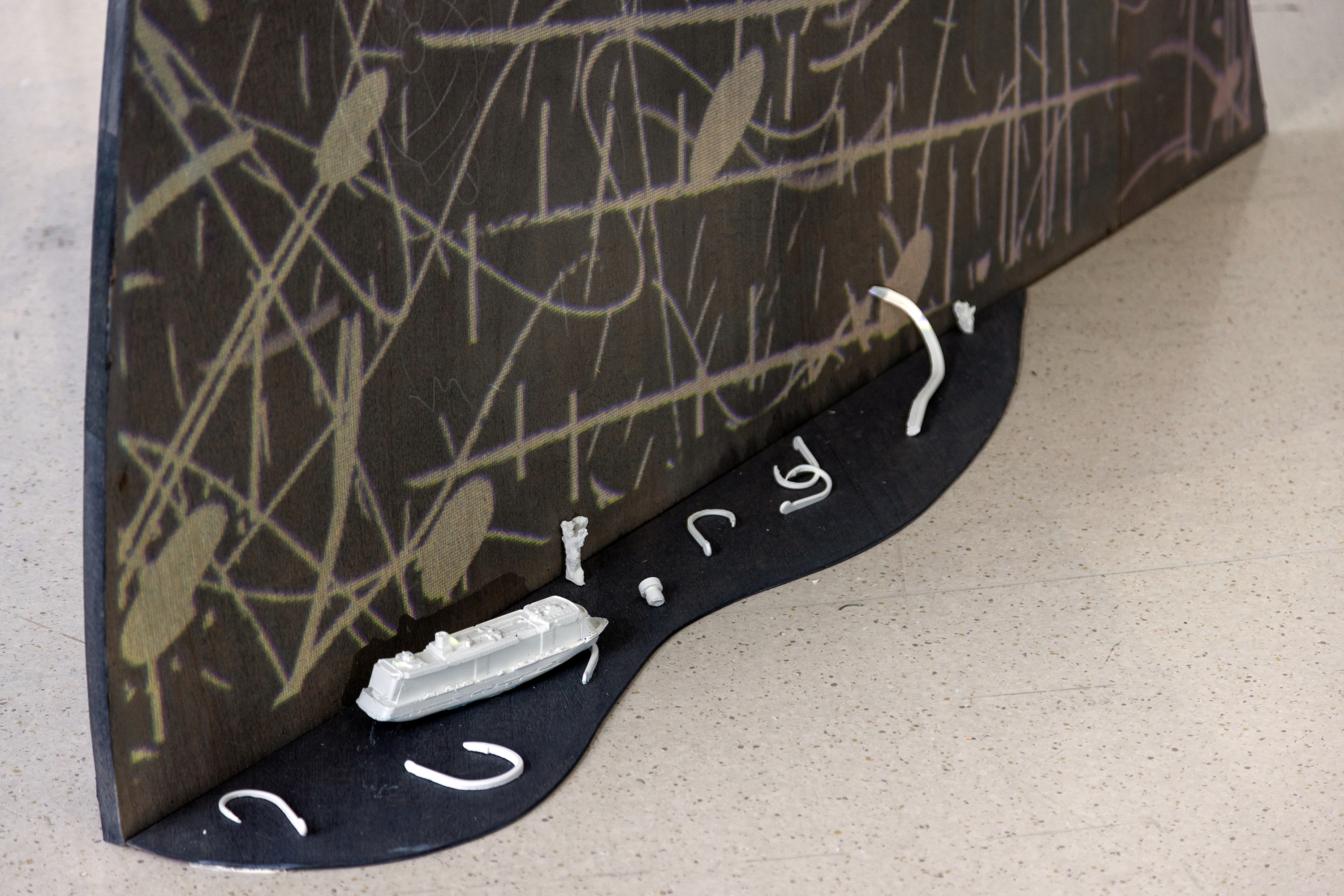+ Co-produced with artist Chang Ken-Yao, Kuroshio Ocean Education Foundation +
Deep Blue Tower of Babel
Wooden base, crayon, animated projection, sound
dimensions variable
2022
Risso’s dolphin gets scars from natural causes, such as fights with other dolphins and enemies, and human effects, such as fishhooks and being rammed by boats. The scars are how the animal replies to exterior influences. The dorsal fin is an important means of distinguishing a cetacean. For over ten years, the Kuroshio Ocean Education Foundation has been working on a photo-ID project for Risso’s dolphins, which inspired this piece. Walking in and around the fin-shaped panels, viewers fell as if they were inside a pod of dolphins. Objects that harm dolphins, such as plastic bags and boat propellers, have been made into white crayons which viewers may use to draw scars on the fins. When we come to understand the code of scars on cetaceans’ bodies, we will realize what kind of living environment humanity is creating.
︎
+ 與藝術家張根耀、黑潮海洋文教基金會共同製作 +
深藍巴別塔
木座、蠟筆;動畫投影、聲音
2022
造成花紋海豚體表痕跡的有自然因素,例如與同類或天敵的纏鬥,以及人為因素,如魚鉤、船隻撞傷。這些紋路是生命對外在影響力的回應、回映與回音。背鰭也是觀察鯨豚的重要識別,10多年來,黑潮海洋文教基金會以此建立花紋海豚的個體辨識(PHOTO ID),促成本作之發想。現場裝置的背鰭板,可令觀者穿梭其中,猶如置身鯨豚,而造成傷疤的人為物件,如塑膠袋、螺旋槳等物,以其形翻製成白蠟筆,供觀者在鰭上留痕。當我們得以解讀鯨豚體側傷疤符碼時,也警醒到人類正在助長什麼樣的生存環境。






